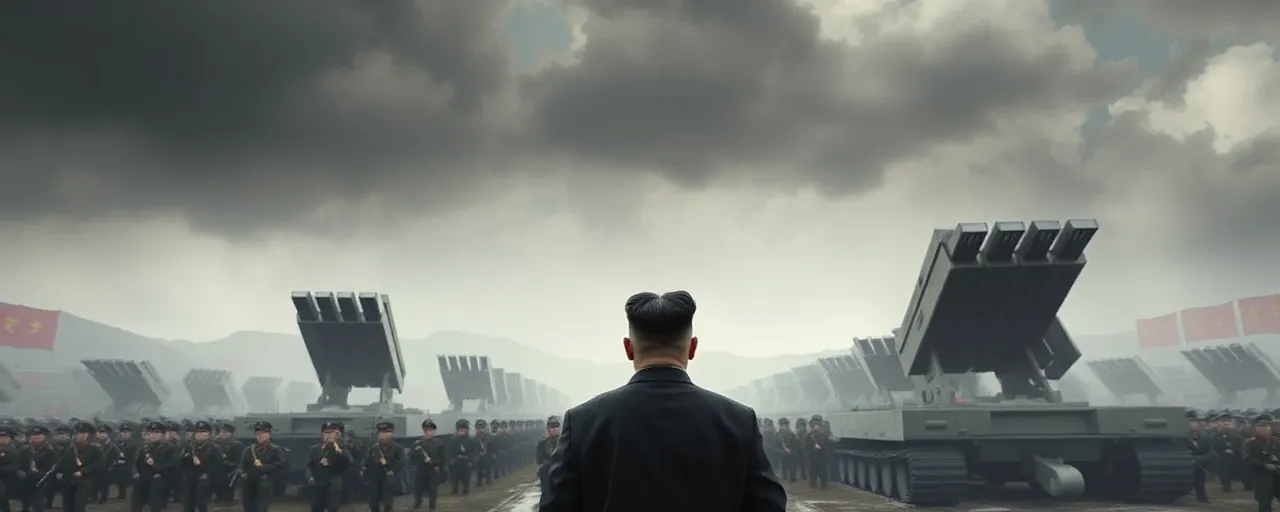A Rising Threat Takes Shape
North Korea’s weapons program hit a new stride in 2024, launching 47 ballistic missiles and pushing the boundaries of military technology. Army Gen. Xavier T. Brunson, commander of U.S. Forces Korea, laid it out plain during a Senate Armed Services Committee hearing on April 10, 2025. He painted a picture of a nation doubling down on hypersonic glide vehicles and cruise missiles, with plans to roll out even deadlier systems in the year ahead. It’s the kind of news that lands heavy, especially for people just trying to grasp what this means beyond the headlines.
The stakes feel real when you consider the ripple effects. These aren’t just test launches lighting up the sky; they’re a signal of a regime flexing its muscle while the world watches. Brunson warned lawmakers that North Korea’s nuclear ambitions aren’t slowing down either, backed by a 1.3-million-strong military getting a boost from Russian gear. For anyone new to this, it’s less about political buzzwords and more about tangible risks, like what happens if those weapons start pointing farther afield.
Cyber Cash and Russian Ties
Money keeps this machine running, and North Korea’s found a slick way to bankroll it. Brunson highlighted a jaw-dropping $1.5 billion cryptocurrency theft in early 2025, pinned on state-sponsored hackers who hit the Bybit exchange. It’s not a one-off; experts peg the regime’s cyber haul at over $5 billion since 2017, funneled straight into missiles and nukes. For regular people, it’s a gut check, knowing digital heists half a world away could fuel a warhead.
Then there’s Russia. Over the past 18 months, North Korea’s shipped troops and munitions to back Moscow’s fight in Ukraine, losing about 4,000 soldiers in the process. In return, Pyongyang’s scored food, coal, and whispers of tech swaps, like satellite know-how. Brunson sees it as proof North Korea can juggle domestic gains with foreign muscle. Some argue it’s a lifeline for a sanctioned state; others say it’s a dangerous dance that could tip regional scales.
A Border Hardens, A Dream Fades
Kim Jong Un’s playbook took a sharp turn recently, and it’s not about bringing the Koreas closer. Brunson testified that North Korea’s ditched its old reunification goal, once a cornerstone of its identity. Now, it’s all about sovereignty, with the southern border locked tight and unification monuments reduced to rubble. The shift, cemented in late 2023, reflects a regime more interested in standing alone than mending ties, a move that’s left South Koreans skeptical, with just 6.5% holding out hope for better days in 2025.
Inside North Korea, awareness is another story. Brunson pointed to troops sent to Ukraine, calling them die-hard believers in Kim’s vision. Decades of censorship and propaganda have kept most citizens in the dark, though cracks show up in underground markets smuggling foreign media. It’s a tug-of-war between control and curiosity, one that leaves outsiders wondering how long the lid can stay on.
Keeping the Line in the Sand
Brunson didn’t mince words when lawmakers asked about U.S. troops on the Korean Peninsula. Pulling back now, he argued, would weaken the ability to push back against North Korea, Russia, and even China in the region. It’s about holding ground in the East and West Seas, a deterrence strategy that’s been a fixture since the Korean War’s uneasy truce in 1953. For those unfamiliar, it’s less about flexing power and more about keeping a lid on escalation.
The flip side? Some question if a heavy U.S. presence just stokes the fire, giving Kim more reason to arm up. History offers mixed lessons, from the failed Sunshine Policy’s olive branch to the fleeting 2018 peace talks. Brunson’s focus is clear: gear up, deter, and be ready to win if it all goes south. It’s a gritty reality for a world hoping tensions don’t boil over.
What’s Next for the Peninsula and Beyond
North Korea’s trajectory isn’t slowing. Hypersonic tests in January 2025 showed off solid-fuel missiles that dodge defenses, a leap from the clunky SCUDs of the 1970s. Add in cyber millions and Russian backup, and you’ve got a regime carving out a spot on the global stage. Brunson’s testimony ties it together: this isn’t just a regional headache but a puzzle with pieces stretching from Seoul to Moscow to Washington.
For everyday people, the takeaway hits home. It’s about missiles that could reach farther, cash stolen from digital wallets, and a leader who’s traded unity for isolation. The world’s left weighing options, from tighter sanctions to diplomatic long shots, all while hoping the next launch stays a test, not a tipping point. Time will tell if deterrence holds or if the cost comes knocking.
